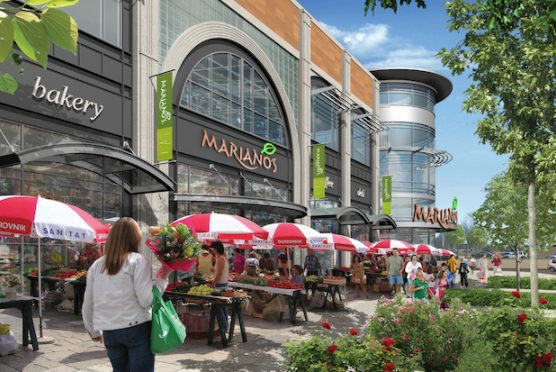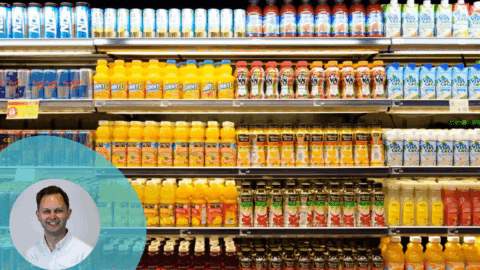 The current pace of retail bankruptcies and store closures could lead to as many as 25% of the nation’s malls closing by 2022, according to a report from Credit Suisse. This percentage equates to roughly 275 mall closures over the next five years, suggesting that the mall model must change — and change fast.
The current pace of retail bankruptcies and store closures could lead to as many as 25% of the nation’s malls closing by 2022, according to a report from Credit Suisse. This percentage equates to roughly 275 mall closures over the next five years, suggesting that the mall model must change — and change fast.
In a Q&A with Retail TouchPoints, Jason Green, the CEO of Chicago-based retail and CPG consultancy The Cambridge Group, shared the direction he believes malls will have to take in order to survive and thrive. During the interview, Green discusses:
-
Major problems today’s mall operators face;
-
The need to gravitate toward a “lifestyle mix” as they cater to a growing urban, Millennial population;
-
Transitioning from fast food “food courts” to more locally curated “food halls;” and
-
Integrating mobile to address convenience, including parking and product fulfillment.
Retail TouchPoints (RTP): What are the biggest problems today’s malls face?
Jason Green: Malls are facing some significant headwinds as a retail format. There’s the shift to online purchasing and mobile specifically becoming a much better experience than it was a few years ago, and even the slowest population growth that we’ve had in the U.S. since the Great Depression at 0.7% per year. There’s also a Millennial trend of moving to urban centers and cities.
All of those things create headwinds for the traditional suburban mall along with the fact that many of their anchored tenants are under pressure. A lot of those suburban malls were anchored by a big department store, and those formats obviously haven’t fared very well in the past couple years.
Different metrics would tell you that we overbuilt the mall retail space and so there’s too much supply on the market. Do I think malls are going to disappear soon? No, but it’s not incredibly surprising to see a retrenchment.
RTP: How will malls pivot away from the anchor-based model as department stores draw less traffic?
Green: The malls that are succeeding have shifted toward this lifestyle mix — and what I mean by that is restaurants, entertainment destinations, bowling alleys and movie theaters, but some of them now even include apartment buildings and condos as part of that lifestyle mix. If they’re in an urban location, it’s perhaps a little easier because, again, Millennials are flocking to cities.
For example, there’s one here in Chicago that opened recently in the Lincoln Park neighborhood that’s called NEWCITY, and it’s all of the above. It’s anchored by a Mariano’s grocery store, which has come on fast and furious and has boosted the complex’s popularity as a whole. It’s right near a transit stop and has apartments and condos available for rent. This lifestyle mix appears to be more in tune with what Millennials are looking for.
There’s also ‘food halls,’ which tend to be much more upscale than traditional food courts. I would say Eataly is almost a food hall, except it’s not multiple vendors. A lot of times, food halls are organized around local restaurants that are popular, and not national fast food chains. With more shoppers deciding to eat out instead of buy groceries, you’re also seeing them savoring the extra social time, which can ultimately be helpful in reviving the fortunes of a mall.
RTP: How will mall operators replace the spaces presently filled by the anchor companies?
Green: Mall operators will have to create boutique-feeling spaces with multiple vendors so they’re not tying their fortunes to one particular tenant. It makes it more exciting for the shopper as well when there’s a variety of interesting, premium options available.
You’re seeing this in the hotel industry a lot too. Boutique hotels are on trend versus the traditional big box hotel; these boutique hotels often have a connection to that city or neighborhood that is very authentic, which parallels the story of the food hall.”
RTP: How can mall operators gain an understanding of the changes customers desire so they can better cater to their shopping preferences?
Green: There’s a couple ways you can unpack this. There is a couple-mile radius around the mall, which is its inherent ‘trading area.’ One step is conducting quantitative or qualitative research to understand who is in that natural trading area and what they do. You can also opt to use Big Data to understand who those people are without having to do custom research.
Then, you can look at an additional piece, which focuses on the feasibility of turning a mall into a destination. Can you pull from outside that radius by making it compelling enough to drive 30 to 45 minutes to spend the day there? It’s about expanding that natural trading area out where you start to understand the barriers and the elements that could help you overcome them so that people would make that trip.
These elements can come in the form of sponsored events at the mall. You may have fireworks one night, have entertainers of some kind or even have food trucks show up.
RTP: How can malls further integrate mobile into their modern experiences?
Green: Automotive companies have tested a concept — instead of a shopper coming to the showroom when they use mobile, they bring a car to the shopper. Never underestimate the desire for convenience among consumers. If you can figure out online platforms for situations where the mall parking lot is four miles long and the shopper doesn’t want to find a parking spot, then great.
‘Tell us when you’re coming, we’ll have a valet set up for you.’
‘What if that food hall is too packed?’ ‘We’ll have a table waiting for you.’
‘While you go enjoy a movie or concert, you have a click-and-collect opportunity where you don’t have to wade through the store. You could just go to the front and pick it up.’
Convenience is the overarching theme, and it’s created an expectation, especially among younger consumers that now wonder why they can’t get something immediately.”
Jason Green is the CEO of The Cambridge Group. He focuses on developing customer-driven strategies, new product development, positioning, and consumer segmentation for consumer goods, retail and services industries. In addition to working with clients, Green also leads Nielsen’s global Growth and Demand Strategy practice. Green has been published in the Harvard Business Review, among other publications.













